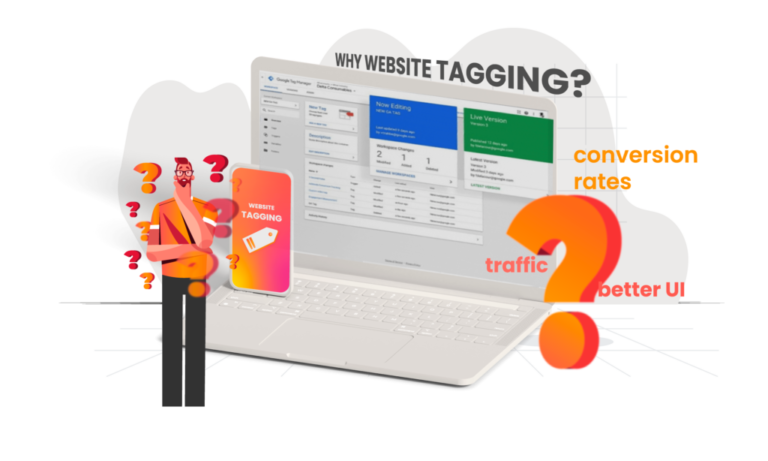Five Key Steps to
Effective Website Tagging
10 min read August 17, 2021 Article
10 min read
August 17, 2021
Article

For most marketers, website tagging seems like a straightforward and manageable activity. Most will elect to utilize ‘default’ tagging with the misconception that they’ve done everything necessary to capture key analytics adequately. However, appropriate tagging requires in-depth knowledge of website analytics and careful implementation to ensure user behavior is tracked accurately. Too little or inappropriate tagging, and you will likely lose key points in the customer journey.
- The use of default tags may provide a glimpse into website traffic behavior, but they fail to provide clarity on what happens if users are on the page.
- Specific important details cannot be identified, such as not knowing how long a video has been watched, how users interact with a text box on the website, etc.
- It does not directly attribute user actions to campaigns. When executing social media and email campaigns, the traffic generated will inadvertently get classified as referrals if marketers fail to tag the activities with a UTM.

Effective tagging is essentially applying a proper methodology to understand user behavior in more granular detail. It helps identify specific pages leading to disengagement, measure the success of individual campaigns, understand which pages are inefficient and lead to redundant back and forth, know which sections are viewed more, and track the user’s path to purchase. Default tagging, on its own, cannot provide you such detailed information. Applying tagging best practices is required for enhanced data capture, which leads to better business applications.

Understand the ‘why’: Align your tags with the priorities of the business and individual campaigns. In short, what do you want from the website? Are you seeking more traffic, increased conversation rates, a better user experience, or just more details on user engagement? Tagging methodology can vary greatly depending on the objectives.
Use consistent terminology: There are multiple areas where you must provide tag names, such as accounts, properties, views, campaign sources, campaign mediums, campaign ids, events, etc. Every marketing team should manage a document that details your Tracking Structure to ensure everyone knows what is measured and where. Applying consistent terminology will ensure everyone is reading from the same book.
Tag your media campaigns: It’s important to know how your campaigns from third-party sites/vendors perform. Your campaign tags can replace default values with specifics about each campaign, including the name, source, medium, term, and content. If this level of detail is not a priority, you can restrict the tags to the campaign name and medium/source at a minimum.
Use goals to track your metrics: Setting goals upfront will help marketers better understand the success metrics and engagement based on any specific event. These goals can be configured in Google Analytics and help provide clarity on the effectiveness of your website/campaigns. For example, suppose a goal of a specific campaign is encouraging consumers to compare plans on your health insurance website. In that case, you can define a successful click of the “Compare Plans” button as a goal and easily quantify success with a comparison ratio. Note that multiple goals can effectively be tracked together.
Leverage a Tag Management System (TMS): A TMS will make adding and editing any tag much easier through a user-friendly interface. It requires much less development work only takes a fraction of time versus applying the tags manually.
There are many other nuances associated with effective tagging that should also be applied, such as checking the implementation of the data layer. Still, these will often require a deeper level of tagging methodology understanding and experience. For an internal IT to implement each of these can be a herculean task and should ideally be handled by a tagging specialist to ensure proper informative and actionable outputs.



